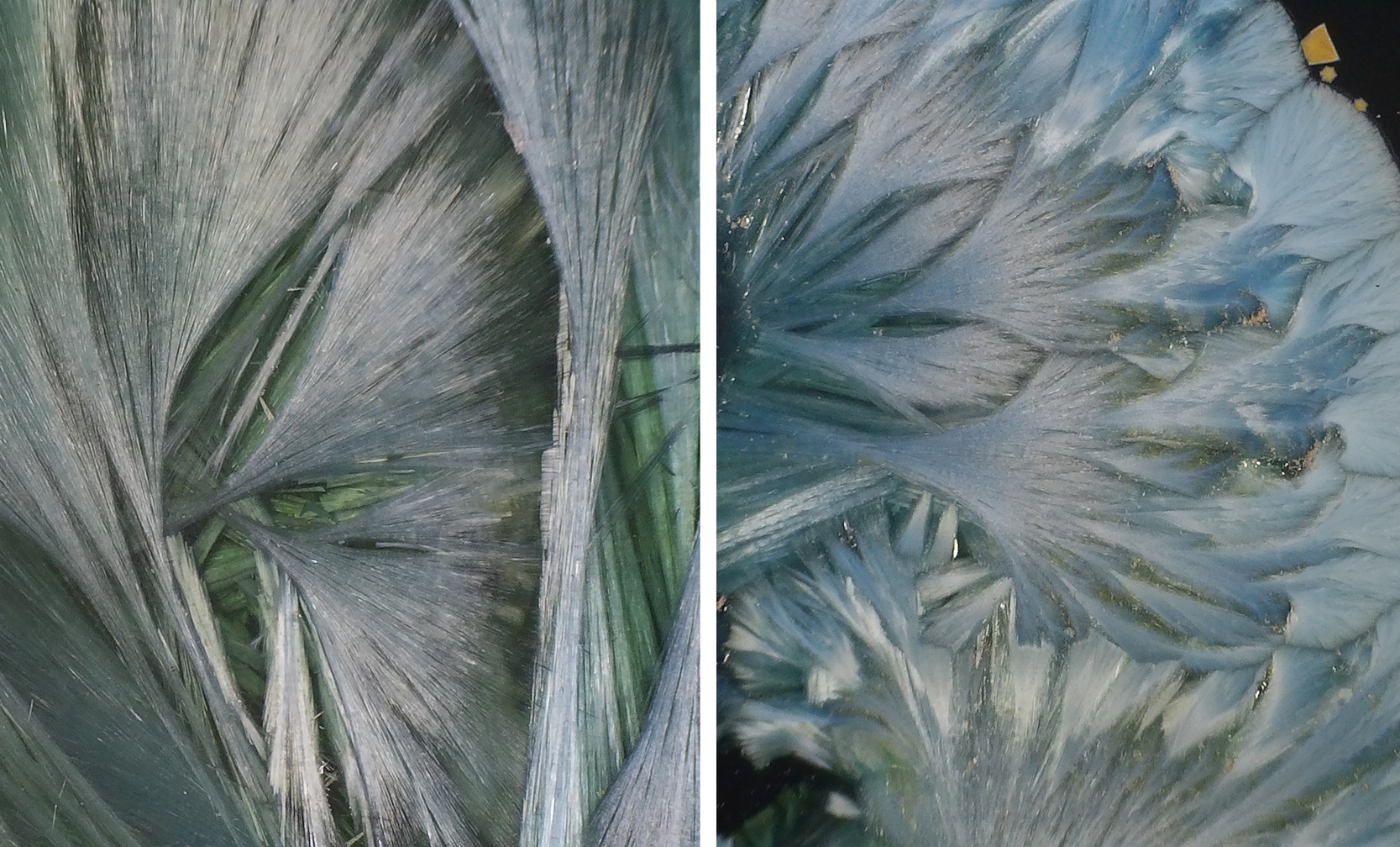Growing incredible glaze crystals is also about the chemistry
Closeup of a insight-live.com/glossary/44">crystalline glaze. Crystals of this type can grow very large (centimeters) in size. These grow because the chemistry of the glaze and the firing have been tuned to encourage them. This involves melts that are highly fluid (lots of fluxes) with added metal oxides and a catalyst. Typically, the fluxes are dominated by K2O and Na2O (from frits) and the catalyst is zinc oxide (enough to contribute a lot of ZnO). Because Al2O3 stiffens glaze melts, preventing crystal growth, it can be almost zero in these glazes (clays and feldspars supply Al2O3, so these glazes have almost none or either of them). The firing cycles involve rapid descents, holds and slow cools (sometimes with rises between them). Each discontinuity in the cooling curve creates specific effects in the crystal growth. These kinds of glazes are within the reach of almost anyone today since electronic controller-equipped kilns are now commodity items - one can fiddle with the chemistry and manage the testing of glazes in their insight-live.com account. But be ready for work, others on this path have done hundreds of firings to perfect a recipe and scedule.
Pages that reference this post in the Digitalfire Reference Library:
Zinc Oxide, One secret of crystal glazes is firing schedule, Crystalline glazed vase by Rod and Denyse Simair, Crystalline glazes, Crystallization, Glaze Chemistry, Metal Oxides

This post is one of thousands found in the Digitalfire Reference Database. Most are part of a timeline maintained by Tony Hansen. You can search that timeline on the home page of digitalfire.com.
